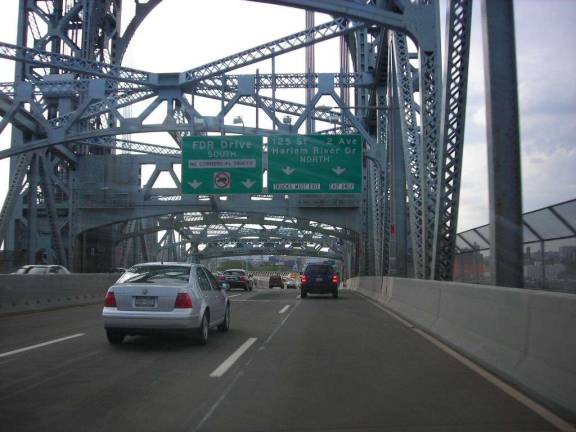NY Bridges Found Deficient and Dangerous

A review found that hundreds of New York state's bridges are structurally deficient, and several of those are in NYC
The lifeline of New York City, surrounded by water, is the bridges that link its five boroughs to each other and the world.
But the aging structures - including the beautiful, landmark Brooklyn Bridge - could now themselves be at risk if billions of dollars aren't spent to keep modernizing them.
Some of these crucial connectors in the nation's largest urban community are among more than 2,000 New York state bridges the government says are structurally deficient and badly need repairs.
"I say, you have a legal, moral and ethical obligation as stewards of the traveling public not to let people go over something that's unsafe," says leading construction attorney Barry LePatner, author of the book "Too Big to Fall: America's Failing Infrastructure and the Way Forward."
An Associated Press review of 607,380 bridges in the federal government's National Bridge Inventory found that 65,605 of them are structurally deficient. That means they're in need of rehabilitation or replacement because at least one major component of the span has advanced deterioration or other problems that lead inspectors to deem its condition "poor" or worse. According to the most recent data, 20,808 bridges are deemed "fracture critical," meaning they don't have redundant protections and are at risk of collapse if a single, vital component fails.
Some 7,795 bridges nationwide fall into both categories - a combination of red flags that experts say is particularly problematic.
More than 400 of these are in New York state.
The list includes the Brooklyn Bridge, which is undergoing a four-year, $500 million reconstruction. Completed in 1883, the suspension span over the East River is being updated for about 120,000 vehicles and thousands of pedestrians crossing daily.
"It was designed before vehicles were in existence, and it's never going to be corrected for those things," said Richard Marchione, head of the state Department of Transportation's Office of Structures, responsible for bridge evaluation. "To maintain it is a big proposition for the traffic it now carries."
The state-owned Kosciuszko Bridge between Brooklyn and Queens, from 1939, is considered one of the most dangerous stretches of roadway in New York, with 160,000 daily vehicles causing massive bottlenecks resulting in a far above-average number of accidents. Gov. Andrew Cuomo helped fast-track $800 million in funding to replace the narrow twin arch with a new, nine-lane bridge by about 2017.
But all in all, New York City's biggest bridges are in generally good shape, because the administrations of two mayors, Rudolph Giuliani and Michael Bloomberg, had committed more than $5 billion "to make our bridges safe," LePatner says.
On the 82-year-old George Washington Bridge between Manhattan and New Jersey, hundreds of steel beams are being replaced, and about $1 billion is going into renovating the 77-year-old Robert F. Kennedy Bridge - previously called the Triborough - that takes travelers to the John F. Kennedy International Airport.
Most state bridges facing the double whammy of being both structurally deficient and fracture critical are not in imminent danger of collapsing, says Beau Duffy, spokesman for the state Department of Transportation.
"If it's open, it's not unsafe," he says.
Not so, says LePatner - especially with deteriorated old bridges.
"The physics is that they could fall at a moment's notice, or next month or next year - if they're left in the current condition," he says. "It's a ticking time bomb."
New York state is sprinkled with bridges that were not designed for the volume of traffic they are handling. Emergency construction on dozens has been accelerated. Others were shut down altogether. In Macedon, 20 miles outside Rochester, a closed bridge is not scheduled for repair until 2015.
And in Buffalo, where a half-dozen bridges were under repair this year, the running joke is that the city has two seasons: winter and construction.
Also needing constant fixing are bridges used by Amtrak trains, and the Metro-North and Long Island commuter railroads to New York City suburbs.